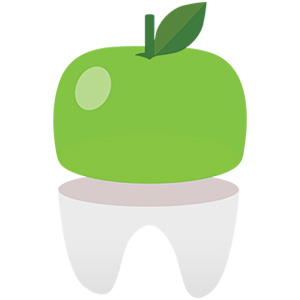October is here, which means it’s time to celebrate National Orthodontic Health Month. The truth is, orthodontic treatment isn’t just a cosmetic fix – it’s an investment in your overall health and well-being. In honor of National Orthodontic Health Month, let’s explore five key reasons why having straight teeth and an aligned bite can make a big difference in your quality of life.
1. Aids in Proper Chewing and Digestion for Better Overall Health
Maybe you’re taking probiotics and eating fermented foods, but did you know healthy teeth and proper chewing can also boost your digestive health?
When teeth are crooked or misaligned, chewing can be challenging. A study in the Journal of Gastroenterology and Hepatology found that impaired chewing impacts digestion. The researchers believe it’s because pieces of food enter the digestive tract that are too big for the body to completely digest. This results in bacterial overgrowth in the colon, leading to gas, indigestion, constipation, and bloating.¹
Additionally, good alignment makes it easier to eat a wide variety of nutrient-rich foods like crunchy veggies and lean proteins, which are essential for optimal nutrition.
Investing in orthodontic care ensures a healthy, well-functioning bite that supports better eating habits and digestion.
2. Helps to Prevent Oral Disease
One of the most immediate benefits of straight teeth is improved oral health. Misaligned teeth create hard-to-reach areas where plaque and food debris can hide, increasing the risk of tooth decay and periodontal (gum) disease.
Straight teeth are easier to clean, reducing the accumulation of harmful oral bacteria and lowering the risk of gum disease. Research has linked periodontal disease with heart disease², diabetes³, Alzheimer’s disease⁴, and more.
So when weighing the cost of orthodontic treatment, keep in mind that it protects your teeth and gums from future problems. This may help you reduce the risk of some chronic diseases and avoid costly dental procedures. That’s a win-win-win for your smile, health, and wallet!
3. Wards Off Pain
Malocclusion (bad bite) can lead to chronic pain, headaches, and even TMJ disorders, affecting your daily life and overall comfort.⁵ That’s why, at Fresh Orthodontics, we go beyond aesthetics.
Dr. Ankush Khanna creates a custom treatment plan that not only considers your smile, but also accounts for your jaw, temporomandibular joints (TMJ), and chewing muscles. Creating harmony in the entire chewing system can relieve tension and allow your TMJ to function at its best.
4. May Improve Airway Health for Better Breathing and Sleep
A narrow palate and misaligned bite can cause airway obstruction and sleep-disordered breathing, like snoring or sleep apnea.⁶ Check out our post on snoring and mouth breathing in kids to learn more about the link between the jaw and breathing.
A two-phase treatment plan with a palatal expander in childhood followed by braces or clear aligners in the teen years can widen the palate and align the jaw. In some cases, this helps to open the airway and promote nasal breathing for more restorative sleep and better health.
5. Boosts Your Self-Confidence
A confident smile can be life-changing – just ask Dr. Khanna! Your self-esteem and mental well-being are closely linked to how you feel about yourself.
Getting a smile you’re proud to show off is one of the major benefits of Spark Aligners, metal braces, or clear braces. This newfound confidence can potentially boost your mental health and open the door to new opportunities.
Ready to Celebrate National Orthodontic Health Month?
At Fresh Orthodontics, we believe in a fresh approach to smile care – personalized, high-tech, and focused on your well-being. This National Orthodontic Health Month, consider investing in orthodontic treatment to enjoy the perks that come with having straight teeth and an aligned bite.
Whether you’re curious about the benefits of Spark Aligners, wondering if braces are worth it, or want to learn about the cost of orthodontic treatment, we’re here to guide you from start to finish.
Book a complimentary consultation with our Brooklyn orthodontist today and take the first step toward a healthier, more confident you.
Cast Your Vote for Fresh Orthodontics for Best of Brooklyn 2025!
Last, but not least, we’re thrilled to announce we’ve been nominated again for a Best of Brooklyn award. This National Orthodontic Health Month (and beyond) help us bring home the win for “Best Orthodontist” for the sixth year in a row! Voting is open from now through December 31, 2024. You can vote once per day for each category by clicking here. We appreciate your support and votes!
Sources:
- Mercier, P., and P. Poitras. 1992. Gastrointestinal symptoms and masticatory dysfunction. Journal of gastroenterology and hepatology 7 (1):61–5. doi: 10.1111/j.1440-1746.1992.tb00937.x. https://onlinelibrary.wiley.com/doi/abs/10.1111/j.1440-1746.1992.tb00937.x
- Genco R, Offenbacher S, Beck J. Periodontal disease and cardiovascular disease: epidemiology and possible mechanisms. J Am Dent Assoc. 2002;133 Suppl:14S-22S. doi:10.14219/jada.archive.2002.0375 https://pubmed.ncbi.nlm.nih.gov/12085720/
- Taylor GW. Bidirectional interrelationships between diabetes and periodontal diseases: an epidemiologic perspective. Ann Periodontol. 2001;6(1):99-112. doi:10.1902/annals.2001.6.1.99 https://pubmed.ncbi.nlm.nih.gov/11887478/
- Beydoun MA, Beydoun HA, Hossain S, El-Hajj ZW, Weiss J, Zonderman AB. Clinical and Bacterial Markers of Periodontitis and Their Association with Incident All-Cause and Alzheimer’s Disease Dementia in a Large National Survey. J Alzheimers Dis. 2020;75(1):157-172. doi:10.3233/JAD-200064 https://pubmed.ncbi.nlm.nih.gov/32280099/
- Lekaviciute R, Kriauciunas A. Relationship Between Occlusal Factors and Temporomandibular Disorders: A Systematic Literature Review. Cureus. 2024;16(2):e54130. Published 2024 Feb 13. doi:10.7759/cureus.54130 https://www.ncbi.nlm.nih.gov/pmc/articles/PMC10939299/
- Kecik D. Three-dimensional analyses of palatal morphology and its relation to upper airway area in obstructive sleep apnea. Angle Orthod. 2017;87(2):300-306. doi:10.2319/051116-377.1 https://www.ncbi.nlm.nih.gov/pmc/articles/PMC8384357/













